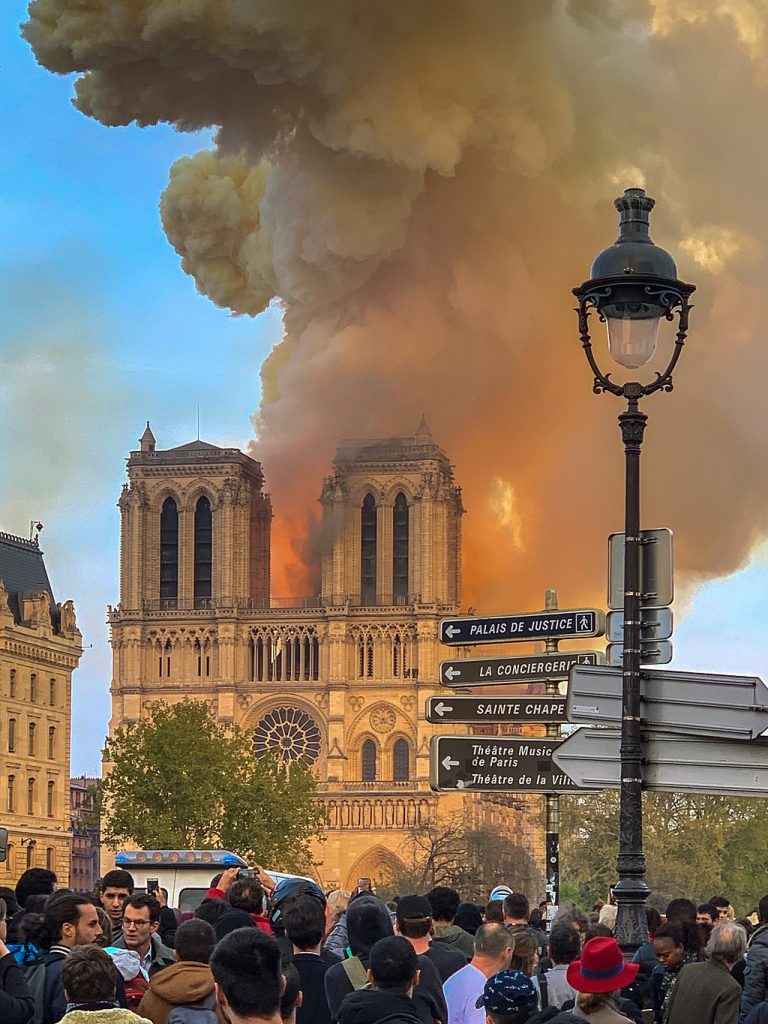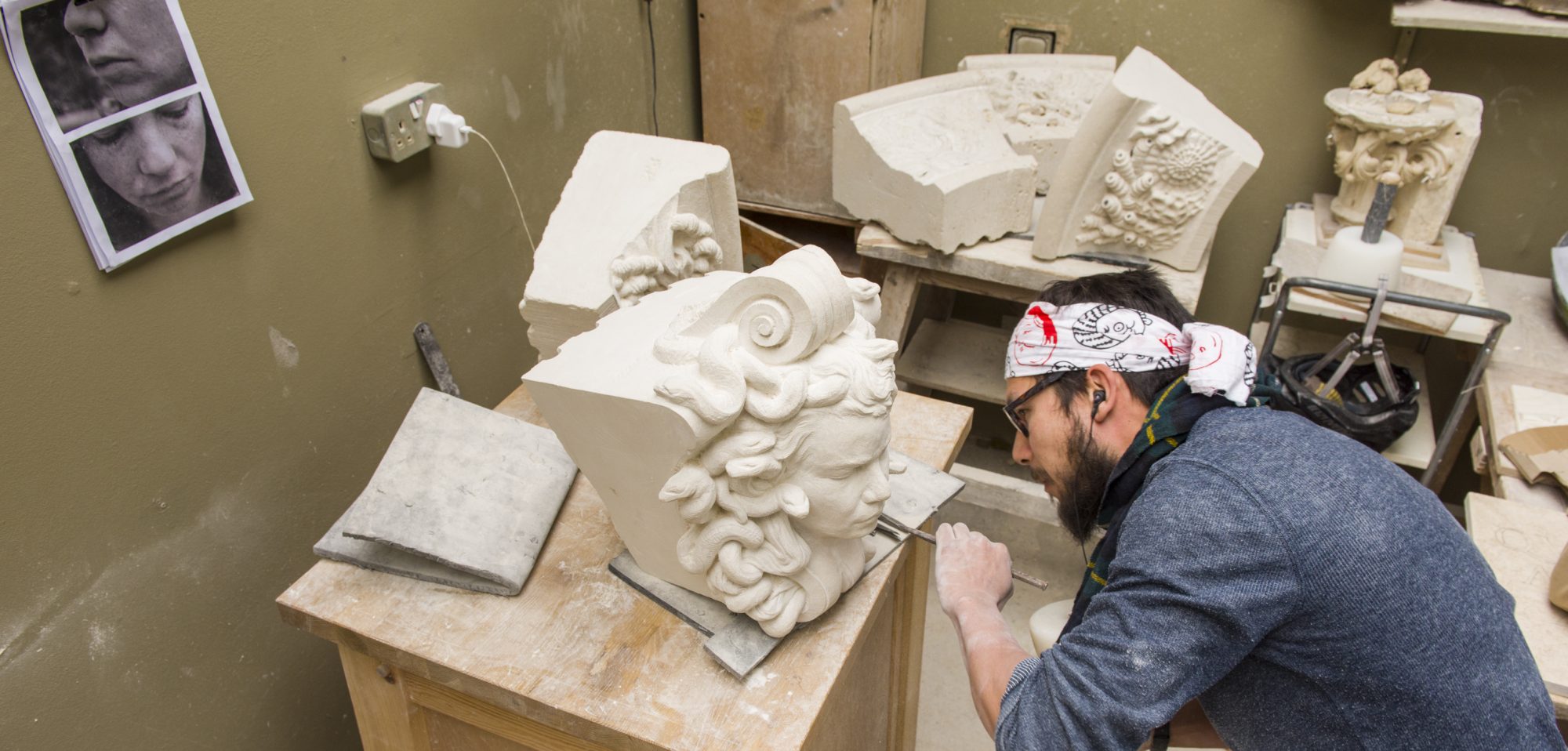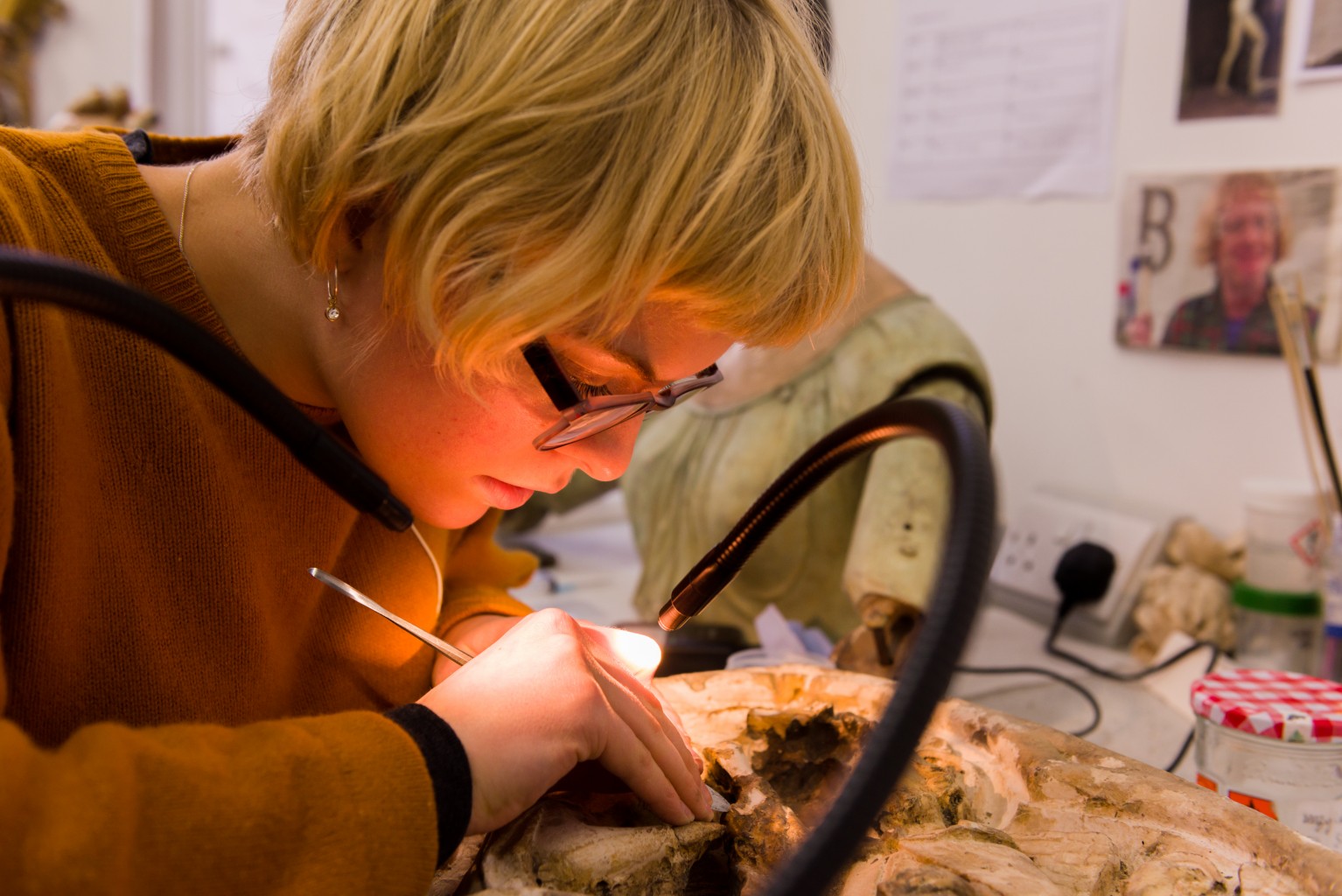The devastating blaze at Notre Dame de Paris, on 15 April has shocked people around the world. The cathedral’s spire was destroyed and the extensive oak-beamed roof was severely damaged in the fire but the stone vaults of the building largely survived, and prevented a far more damaging outcome. It is a testament to the genius of the medieval construction that the entire structure did not collapse.

When catastrophic events like this happen, threatening our cultural heritage, our minds turn to the slow and complex restoration process that will be required to rebuild such revered and important historic buildings. Dr Marina Sokhan is Head of Conservation at City & Guilds of London Art School, one of the only higher education institutions in Europe that teaches the specialist craft skills of historic wood and stone carving and conservation of cultural artefacts. She comments, “It will take a long time to assess the real damage and to make plans for conservation and restoration treatments. Conservators will face challenges at a completely new level due to the unprecedented complexities of the conservation issues related to fire and fire extinction methods in the context of Notre Dame.”
But it’s not only the high level of craft skills that are needed for a reparation on such a grand scale. It’s also the large number of skilled crafts people required. In a report published in Le Monde on 17 April, Jean-Claude Bellanger, Secretary General of the Compagnons du Devoir, an association of elite craftspeople, is reported as saying the reconstruction of Notre Dame is likely to face a shortage of highly-skilled stonemasons, carpenters and roofers. It is predicted that 100 stonecutters, 150 carpenters, and 200 roofers will be needed to work on the repairs from September 2019.
However, time has shown that major cultural disasters of this type, such as the 1966 floods in Venice that destroyed or severely damaged a large portion of its buildings and the fire at Windsor Castle in 1992 that destroyed 115 rooms, have been catalysts for significant advances in restoration and conservation practice and, because of the high-profile coverage of the events, have spurred renewal in the profession. Dr Sokhan adds, “The Notre Dame fire showed us that there is a high price to pay for our human mistakes but at the same time gives us a unique opportunity to re-assess our conservation practice, to develop new approaches, methodologies and new materials and to bring the case of preservation of our shared cultural heritage to the attention of the general public and governments around the world.”

The historic carving and restoration courses at City & Guilds of London Art School were born out of the ravages of the Second World War, which left many important buildings damaged and scarred. From its foundation in 1854, the Art School specialised in teaching Fine Art and Sculpture. After the Second World War, Restoration and Carving courses were introduced specifically to provide the country with the craft skills needed for the restoration of London’s damaged architecture, monuments and treasures.
Since then, these specialist courses have continued to develop and have earned a deserved reputation for excellence. The Art School now offers undergraduate and postgraduate degrees in the conservation of 3D cultural objects and, having recently received validation from Ravensbourne University London, will offer the only BA and MA degrees in historic carving in the UK and possibly Europe, starting in September 2019.

Over the years, the Art School’s Historic Carving alumni and tutors have been involved in the restoration of historic buildings throughout Europe, including the restorative works at Windsor Castle and the National Trust’s Uppark House, as well as the re-creation of the Berliner Schloss, demolished by the government of East Germany during the 1950s.
Tim Crawley, Head of Historic Carving often remarks that his early career developed enormously when he worked on the 23-year long restoration of Westminster Abbey, completed in 1996. “Over this 23-year period a large number of masons and carvers, including myself, had the once-in-a-professional-lifetime opportunity to experience the kind of work that only rarely appears these days; elaborate canopies, finials, friezes, cupolas and statuary. Although the job was completed almost a quarter of a century ago, many of those involved continue in their craft all over the country, many in senior positions and able to pass on their invaluable experience to others working their way up. The forthcoming restoration of Notre Dame has the potential to provide a similar outcome if those commissioning the work seize this opportunity and incorporate this into their planning.”
Students on the Historic Carving and Conservation courses at the Art School are given the opportunity to work with national institutions and organisations on live commissions and gain professional practice, equipping them for a successful career in the heritage sector. Between 2005 and 2018, the Art School collaborated with St George’s Chapel, Windsor, to replace the eroded grotesques at this famous chapel, which dates back to 1348. The Art School’s Historic Carving students have had the opportunity to engage with the full process of submitting works for commission, responding to a brief for a historic location, making work to a high professional standard that has to survive the weather and deliver the final work on time. In total, students from both wood and stone carving courses have produced over 40 new carvings, most of which have already been sited on the outer walls of the Chapel.
This unique collaboration is an example of a bold decision by those responsible for the preservation of a national monument to engage in innovative ways to build significant training opportunities into a major restoration programme. With City & Guilds of London Art School’s commitment to train the wood and stone carvers and conservators of tomorrow, we hope the UK’s crafts men and women will be equipped to sensitively restore and conserve historic buildings in the future.
Those wanting to develop a career in the restoration or conservation profession can apply for one of the Art School’s specialist degree courses, commencing in autumn 2019.
BA (Hons) Historic Carving: Architectural Stone
BA (Hons) Historic Carving: Woodcarving & Gilding


